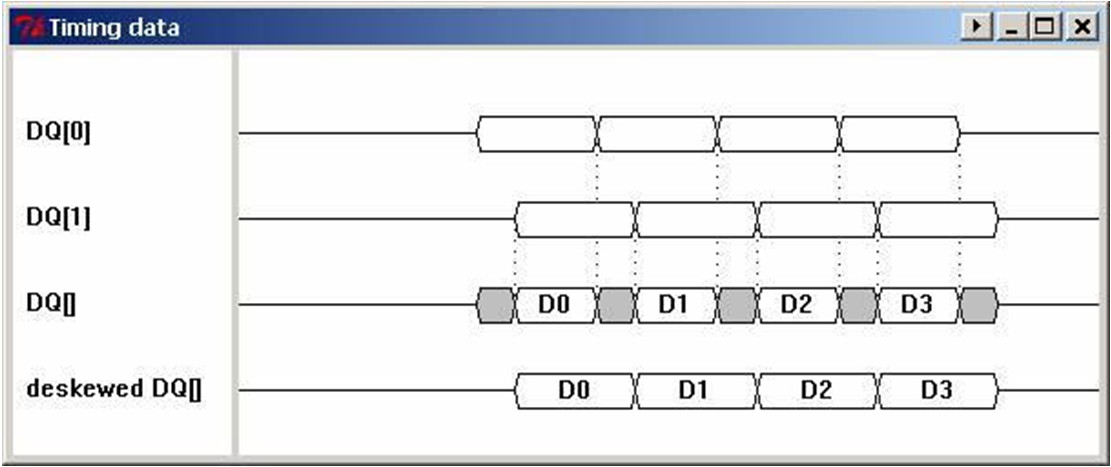Visible to Intel only — GUID: eis1414634898326
Ixiasoft
ALTIOBUF Common Application
One of the key applications for this IP core is to have more direct termination control of the buffers. By enabling series and parallel termination control ports for the I/O output buffers and I/O bidirectional buffers, you can connect these ports to the ALTOCT IP core to enable dynamic calibration for on-chip termination.
The additional dynamic termination control ports allow control when series termination or parallel termination are enabled for bidirectional buffers. Parallel termination needs to only be enabled when the bidirectional I/O is receiving input. Otherwise, it needs to be disabled so that the output performance and power dissipation is optimal.
Another key application for this IP core is for dynamic delay chain in the I/O buffer. Dynamic I/O delay allows implementing automatic deskew, especially for memory interfaces, such as DDR3, which is handled by the memory interface intellectual property (IP). You need to dynamically deskew and not calculate manually because much of the skew can come from the I/O buffers of either the FPGA or the other device the FPGA is interfacing with (for example, memory). Even if the trace lengths are matched, there can still be electrical skew in the system. Also, this skew changes and can change from device to device. Having the ability to deskew from the fabric allows you to remove uncertainties that would have to be considered in the timing budget. This allows you to gain more timing margin, which allows higher frequencies.

For example, if the input (or output) bus signals are DQ[0] and DQ[1], board trace skew, transmitter device skew, or even FPGA package skew could cause signals that were initially aligned to become misaligned. The third waveform shows the window available to the receiver for capturing the data. If DQ[0] was delayed a bit to match DQ[1], a wider window would become available to the receiver.
To find the left and right edges of the data valid window, you need to do coarser adjustments (one possible method is to use the new phase adjustment functionality of the PLL (ALTPLL IP core). The range of the deskew delay chains is only designed to compensate for a reasonable amount of board and package/layout skew.